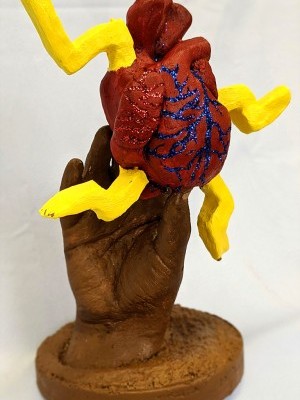Stella Riesbeck
Olney Friends School | Barnesville , OH | 11th
Historical Figure I Admire
Lucy Burns
An activist in the US and the UK, Lucy Burns was born on July 28, 1879 and studied at Yale, Columbia, Vassar, and Oxford. She taught English in Brooklyn for two years but at the age of 27 resumed her studies in Berlin, Germany. She was an excellent student and was supported by her father, who financed her education. While in Germany she connected with Emmeline Pankhurst and was so inspired by her that she dropped her studies and committed herself to the Women's Social and Political Union (which was run by the Pankhurst family) in the UK. She wasn't an extremely prominent speaker in the Suffrage Movement, although she was known to give speeches on street corners which resulted in many court appearances and counts of disorderly conduct.
While in a police station in 1912, Burns met another woman named Alice Paul, who had been arrested for demonstrating at the same time that she was. The two spoke and eventually bonded over their views on the Suffrage Movement and their ideas of how to enact change, and eventually took their ideas back to the US together. They spent years trying to work with the National American Women's Suffrage Association (NAWSA) and eventually broke off from them because of key differences in their beliefs about suffrage. Burns and Paul began a separate organization called the National Woman's Party in 1912, which opposed the anti-violence views of the NAWSA. It was a political party that planned to show the US what women could do with their votes. Lucy worked every job in the party at one time or another, and she was specifically focused on training women on how to handle the press and keeping the Suffrage Movement in the spotlight. She had “suffrage schools” where she taught women how to advocate for their rights and that they deserved respect.
Her time in jail was greater than any other suffragette of the time. She was arrested while picketing the White House in 1917 and sent to Occoquan Workhouse in Virginia, where she still fought for hers and others' rights. She was a driving force behind many documents of the time that stated the rights of political prisoners. She organized many protests within the prison with the women there, including hunger strikes and other forms of organized protests. When guards found out that she was responsible she was transferred to another prison and sent to solitary confinement for the rest of her sentence. She was released later that year and was arrested twice more in the year. After her third imprisonment, she was given the maximum sentence and sent back to the Occoquan Workhouse. She was present during the Night of Terror, an incident in the workhouse where the guards were allowed to brutally torture the women inside. She was especially targeted and after being tortured, was chained for the entire night with her hands above her head.
After women secured the right to vote she retired completely from political life and devoted herself to her orphaned niece and the Catholic Church. She died in Brooklyn, NY on December 22, 1966. She is survived by the Lucy Burns Foundation and the Lucy Burns museum at the original site of the Occoquan Workhouse.
Deadline Extended
There's still time to join Women Leading the Way.
Become a part of our storytelling archive. Enroll your class today.
Join the Project


